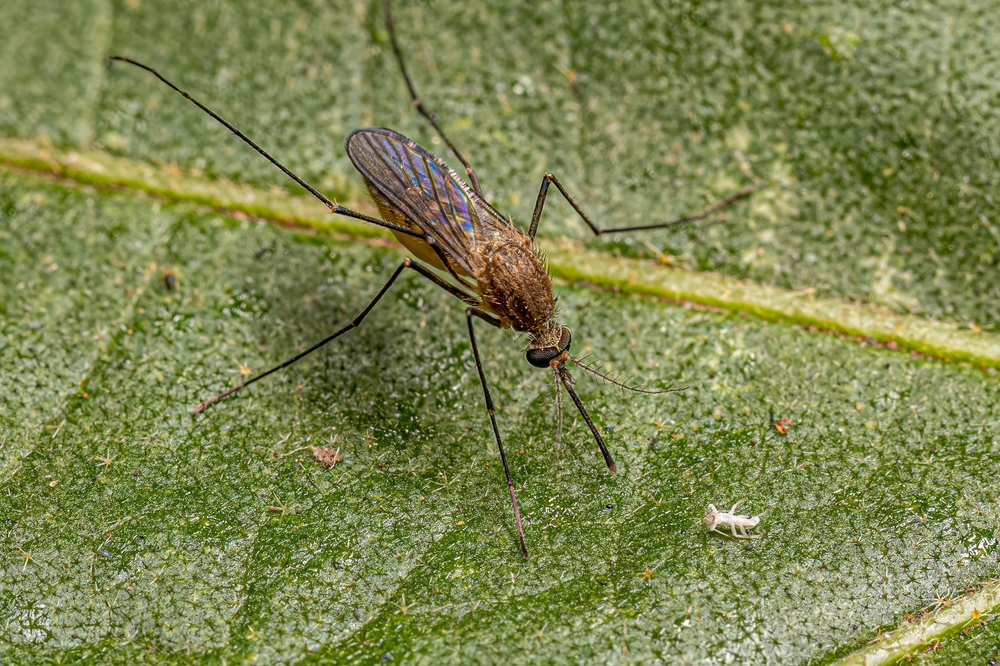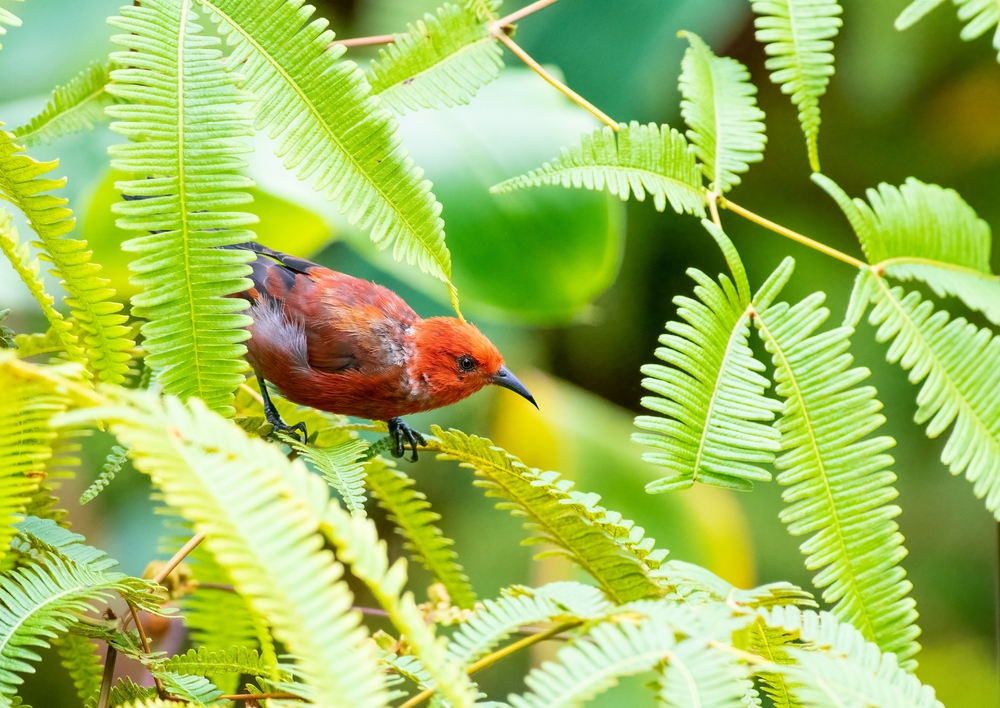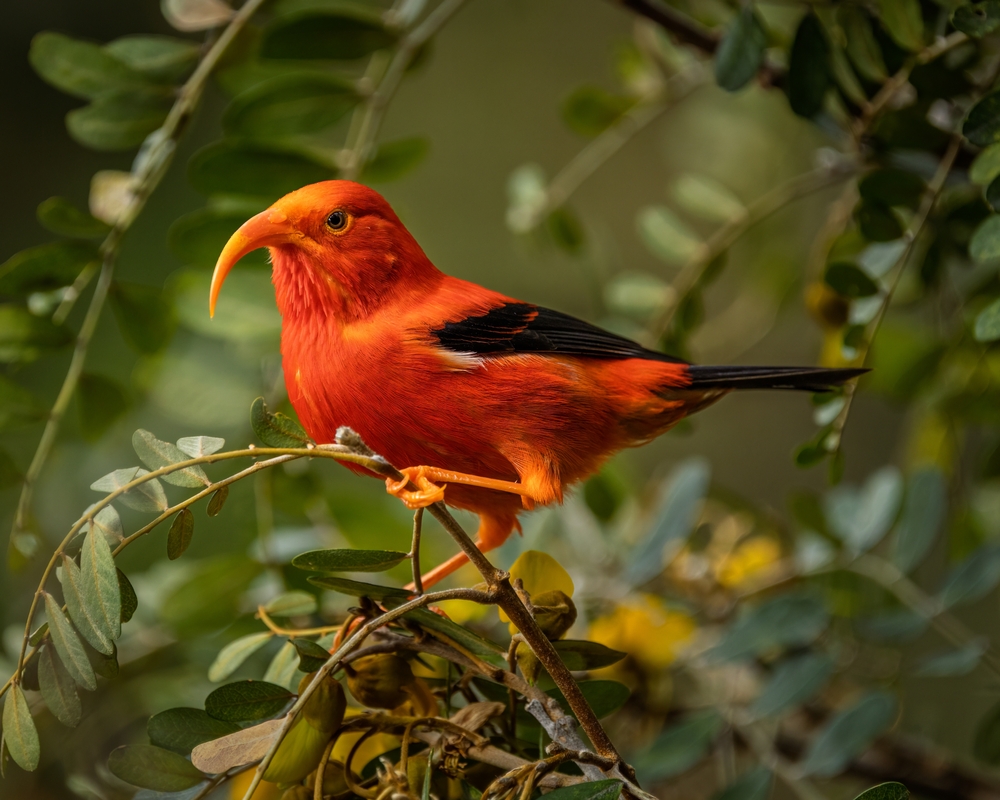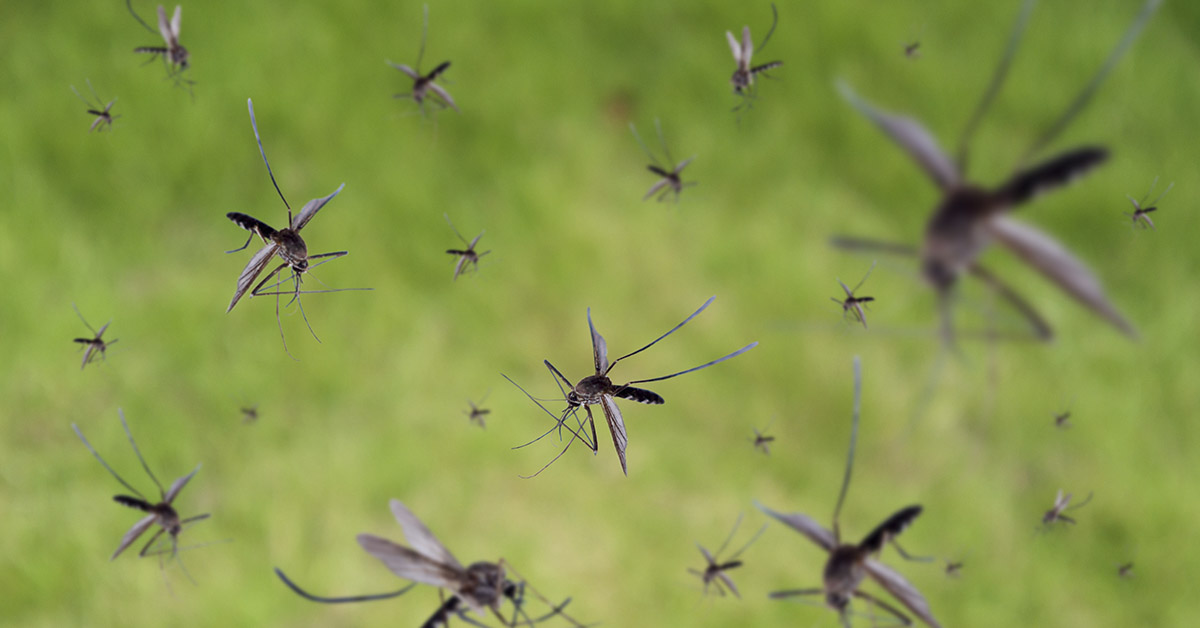In June, a drone flew over Hawaii and dropped biodegradable pods into the forests. Each pod contained about 1,000 mosquitoes. This may sound like something out of a horror sci-fi movie, but this wasn’t some sort of attack on humans. Firstly, the mosquitoes are male, and therefore do not bite people. Second, they were reared in a lab to actually control the mosquito population. Third, if these males accomplish their mission, they can save native Hawaiian bird species on the verge of extinction.
The fatal spread of avian malaria

Hawaiian honeycreepers are a group of small colorful birds that only live in that area. However, the invasive southern house mosquito feeds on these birds and spreads avian malaria, a parasite that can be fatal. There used to be over 50 kinds of Hawaiian honeycreepers, but now there are only 17, according to the Nature Conservatory. In 1826, a whaling ship came to the islands and brought over mosquitoes, which never existed there until now. Therefore, the birds had no immunity to avian malaria and quickly succumbed to the disease.
The cultural importance of honeycreepers

Honeycreepers are a part of Hawaiian culture. For example, their colorful feather are used in traditional garments and crafts. Ancient nobility would wear them on helmets, crowns, leis, and cloaks for special occasions or in battle. Many traditional Hawaiian stories, chants, and hulas pay homage to the birds’ songs and colors. But mosquitoes aren’t the only threats to their existence, according to the Finch Research Network. Their predators include human hunters and other introduced species like pigs, rats, and dogs. Their habitats are also at risk, largely due to the cultivation of non-native crops like sugar cane and sandalwood.
Mosquitos threaten their existence

With their slow reproductive rate, these beloved birds began to disappear. “Mosquito-borne avian malaria exists around the world and most bird populations have it,” says Chris Warren, the Forest Bird Program Coordinator at Haleakalā National Park. “They get sick and recover. Not Hawaiian honeycreepers. For them, mortality is around 90 percent. A single bite can kill them in nine days.”
“Birds, Not Mosquitoes”

Federal, private and nonprofit organizations came together to form the “Birds, Not Mosquitoes” project. Since November 2023, they have released over 40 million male mosquitoes onto Maui and Kauaʻi as a form of population control. If it works, the program will extend to more islands. The drones drop the pods onto the ground, which protect the insects until they are ready to fly away. Then the pods naturally degrade into the earth.
Home is no longer safe

The honeycreepers that remain tend to live at higher altitudes where the air is too cold for mosquitoes. However, global temperatures are rising, and bringing mosquitoes to areas they couldn’t access before. “High elevation habitat is no longer a refuge for them,” says Warren to the National Park Foundation. “If we don’t combat avian malaria directly, we are going to lose them in a short time, astoundingly fast.”
Read More: High-Tech Drones Are Giving Reforestation a Helping Hand
What are invasive species?

Invasive species are defined as non-native creatures that multiply rapidly and disrupt local habitats, or in this case, harm native species. Since they are in a new environment, invasive species often face no natural predators so they are able to reproduce unmitigated by any form of population control. They usually enter the new ecosystem because of human activity, intentionally or not. So controlling invasive species tends to require human intervention once again.
Mosquito population control

It may seem counterintuitive to release more mosquitoes onto Hawaii. But these males all have an intercellular bacteria called Wolbachia that are passed down through eggs. Wolbachia is a common bacteria that is considered safe to people and the environment. However, when mosquitoes with this bacteria mate with ones with a different strain, the eggs do not end up hatching. Therefore, the mosquitoes were given an antibiotic to kill their natural strain of Wolbachia and are given a new strain incompatible with ones the females have.
Insect “birth control”

Female mosquitoes only mate once, and if the mission works, their eggs will not hatch, leading to a quick depletion of the species, at least temporarily. “As soon as we stop, the surrounding mosquitoes will fill back in,” says Warren. “Regular releases of incompatible male mosquitoes are needed to keep down the number of mosquitoes produced that can infect the birds.” As of now, the plan is focused on saving three endangered honeycreepers: the kiwikiu (Maui parrotbill), ʻakekeʻe (Hawaiian crossbill), and the ʻākohekohe (crested honeycreeper). Since the mosquitoes are not native, nothing depends on them for survival, so eliminating them won’t negatively impact the ecosystem.
“We are in an ongoing extinction crisis”

Meanwhile, people hoping to enjoy the outdoors without batting at blood-suckers may be disappointed. This mosquito population control system is taking place too far to affect residential areas. However, those who venture into the forests may make a starting discovery: they are eerily silent. Bird calls are few and far in between. In more ways than one, these once vibrant environments have lost their voice. “We are in an ongoing extinction crisis,” says Chris Warren, forest bird program coordinator at Haleakalā National Park in Maui to NPR. “The only thing more tragic than these things going extinct would be them going extinct and we didn’t try to stop it.”
Read More: Americans are Changing Their Backyards to Save Fireflies from Extinction

